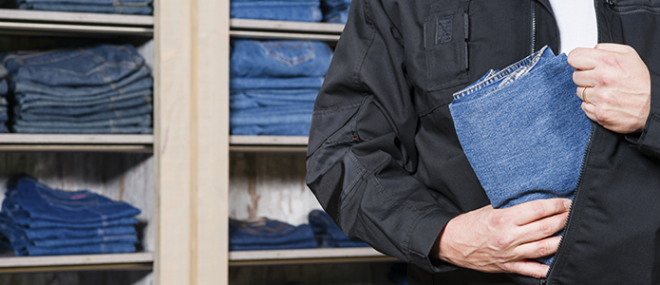Unfortunately, theft costs Canadian businesses a great deal of money each year. Thankfully, there are some tools and tactics you can utilize to mitigate your theft risk. There is no question that fences, doors, and locks can block the paths of burglars and vandals and deter them from targeting your business. And each related enhancement contributes to an overall sense of security.
Below, we outline some of the different strategies your business can use to help deter theft.
Chain link fences
Although having a chain link fence is a great first step, there is room for improvement. These structures can be enhanced by introducing extended line posts, , additional braces, rails, and tension wires. A top guard will also help make the fence tougher to scale. The view through the links might even need to be obscured with a layer of fabric.
But whether working with a fence or a building’s wall, the biggest weaknesses will come in the form of required entrances and exits.
Choosing the right locks
The selected locks make some of the biggest differences.. While a spring-loaded latch will lock a doorknob itself, a more effective deadbolt slides into the surrounding frame. Deadbolts that move horizontally, and can be forced out of a strike plate, can be further enhanced by adding a vertical deadbolt which slides through metal rings on the door’s frame.
Mechanical locks can be operated using several types of keys, such as those which fit into a cylinder tumbler, a warded key (common used for things like cabinet doors), or a magnetic key card. There are also designs that are controlled with combinations or time locks.
Electromagnetic locks use a magnetic force to hold locks tight, while their electro-mechanical counterparts rely on electric power to move a bolt or strike.
Those who are responsible for larger buildings often opt for the convenience of master keys which can open multiple locks. In cases like these, the keys will need to be carefully controlled and kept track of so they are not lost, copied, or stolen.
As important as the locks will be, they are not the only pieces of hardware that will play a role in security. Other options include the choice of hinges, fire exit hardware, and exit locks. Each will have its own design considerations.
Consider the structure of the door itself
Solid wood and solid core wood doors, for example, will withstand brute force better than their hollow counterparts. And such access points can be further enhanced with crossbars, gates, and screens.
Planters, bollards, and jersey barriers in front of windows and doors can help further protect against “smash and grab” attacks when burglars try to smash through the glass doors at a retail store.
Even the glazing on a window can offer extra protection. Security glazing created with laminated glass, acrylic, or polycarbonate material will transmit light, but can still absorb high-energy impacts without sacrificing structural integrity. Bullet-resisting materials – particularly those used to create enclosures known as bandit barriers — can be another valuable addition for businesses which handle large quantities of cash.
Ensure you’re covered
Even if you take the necessary precautions against theft, things can sometimes go wrong despite your best efforts. That’s why having the appropriate insurance coverage plays such a big part in any business’ theft prevention plan. With the right insurance policy, you can have peace of mind knowing that your business is prepared for the unexpected. Learn more by visiting our business insurance page today!




